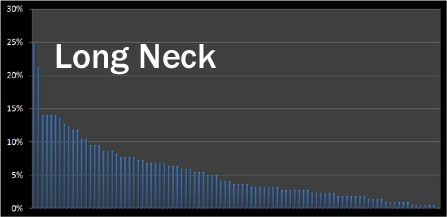 It’s time for that major redesign.
It’s time for that major redesign.
A long list of bugs, feature-requests and usability problems have accumulated and it’s time to fix that website, intranet or software application.
Where do you start? Do look for a new technology, feature requests from the VP, the oldest, most neglected problems in the bug-tracking database?
All of these will play a role in the redesign, but you should start at a more fundamental level. Define the users, what they’re trying to do and how they do it on your application.
It’s easy to get overwhelmed by methods, tools and technology when making design improvements. Regardless of how mature a website or application is, these five steps will bring immediate clarity for all subsequent stages.
- Define the users: It sounds obvious but it’s critical that you know who uses your product and you know how to contact them. Representative users aren’t just those that come from the marquee customer accounts or those most willing to talk to you (for better or worse). If it’s a product-based website are the customers end-users or procurement managers? What percent are US based and what percent of customers are repeat?
- Define their goals: Are users trying to buy products, manage their bills, print pictures, reserve a car? It’s easy to think in terms of features and functions, but your customers aren’t paying you money to login, share on Facebook or search. You have customers because you solve some problem. Know what they are.
- Define the tasks that accomplish the goals: Once you define what users are trying to accomplish you need to define how they do it (or attempt to do it). It’s usually very easy to come up with a list of hundreds of tasks from existing documents and brainstorming. These tasks shouldn’t be too specific or too general. For example, find the price of a product, locate the nearest store, upload a picture. Get this list down to between 80 and 100 tasks. It’s often helpful to interview a few users and have them describe their top tasks. Pay close attention to what words and phrases they use. It’s important that your tasks are phrased in the users’ language. Will users really create a work-flow or are they trying to upload content?
- Have the users rank the tasks: Present the list of 100 tasks to a 100-300 users in a randomized order and ask them to pick their top 5. While a list of 100 may seem overwhelming for users to rank what happens is users scan the list and look for salient key words and phrases that are at the top of their mind. This is also why it’s important when creating the tasks to use the users’ language where possible.
You need to know what these critical few tasks are and be sure they’re done well. While Chris Anderson made the long-tail famous for online retailers, Gerry McGovern asks us to consider the Long-Neck of the task-frequency distribution. In the long-neck of the distribution fall the most important tasks (as shown below).

Figure 1: The long-neck of task votes from a recent top-task exercise with 200 users.After the ranking exercise you’ll end up with a handful of tasks which account for a majority of the vote. The top 5 tasks often account for 15% of the vote and the top 15 account for 50% of the vote. While there are literally hundreds of tasks a small minority of tasks will account for an overwhelming amount of users’ experience with the website or product (these are power-laws, also called Pareto or Zipf ).
Try and have at least 200 users select their top 5 tasks. At this sample size, each ranking will have a margin of error of less than 5%.
- Have the stakeholders rank the tasks: Independent from the user voting, have internal stakeholders vote or rank the same list as the users. This accomplishes two goals. First it identifies the tasks that stakeholders and users agree on (an obvious place to start fixing). Second, it is a sobering exercise when some of the most important internal tasks don’t even make users’ top 20 list (and often end up on the bottom). It doesn’t mean you don’t fix or support these low-voted tasks, it means these are unlikely to be the ones that users are thinking of when they recommend or dissuade others from using your product or website. As a Six-Sigma bonus you can put the user and stakeholder rankings in a QFD.
The output of defining users, goals and top tasks generates a valuable and manageable list for the entire redesign process. Top tasks are used in benchmarking task-performance, a heuristic evaluation from independent evaluators, during formative iterative evaluations and when prioritizing development efforts on the bugs and features that support the top tasks. This exercise takes what seems like a daunting effort and focuses it into a manageable number of steps.

